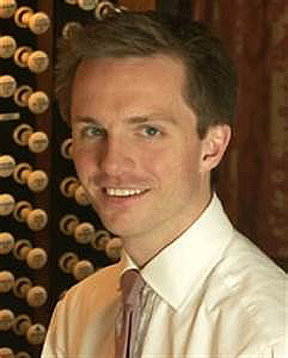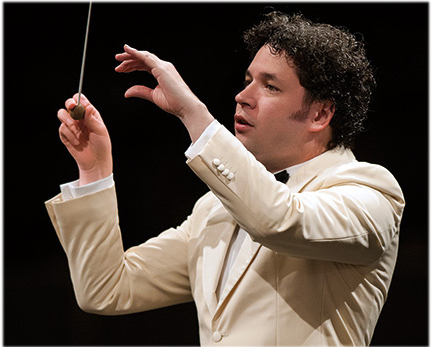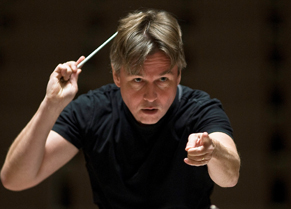By Robert D. Thomas
Music Critic
Southern California News Group
Los Angeles Philharmonic; James Conlon, conductor
Nico Muhly: Register, for Organ and Orchestra (world premiere, LA Phil commission)., James McVinnie, soloist
Mussorgsky-Ravel: Pictures at an Exhibition
Tonight and Sunday: Ravel: Le Tombeau de Couperin
Walt Disney Concert Hall; 111 S. Grand Ave., Los Angeles
Next performances: Tonight at 8 p.m. Tomorrow at 2:00 p.m.
Information: www.laphil.com
 To kick off a very busy music weekend in Southern California and to conclude one of the most significant months in the Los Angeles Philharmonic’s long and storied history, LA Opera Music Director James Conlon walked across 1st St. to Walt Disney Hall to lead a “Casual Friday” L.A. Phil concert that paired the “old” with the new.
To kick off a very busy music weekend in Southern California and to conclude one of the most significant months in the Los Angeles Philharmonic’s long and storied history, LA Opera Music Director James Conlon walked across 1st St. to Walt Disney Hall to lead a “Casual Friday” L.A. Phil concert that paired the “old” with the new.
The “old” was Maurice Ravel’s ultra-familiar 1922 orchestration of Mussorgsky’s Pictures at an Exhibition. The new was the world premiere of Nico Muhly’s Register, for Organ and Orchestra, with British organist James McVinnie (pictured left) as soloist on the Disney Hall pipe organ.
Because this was a “Casual Friday” concert (drinks in the WDCH Gardens ahead of time and craft beer afterwar with the audience encouraged to dress casually), the work that will open tonight’s and tomorrow afternoon’s program, Ravel’s Le Tombeau de Couperin, was omitted and the two other works were played without intermission.
At age 36 Muhly is one of the busiest and most sought-after composers plying his trade today, so it was something of a coup for the Phil to get him to write his first organ concerto. He played the organ in high school but views the instrument as the companion to the synthesizer. The new work is one movement, with three sections, and sped by in a brief 20 minutes.
Muhly collaborated closely with McVinnie, who he met in 2004 at Cambridge and with whom he has maintained a close relationship. Their first musical experience was in a small chapel on Clare College in Cambridge, from where McVinnie went on to become assistant organist at Westminster Abbey and then organist at St. Paul’s Cathedral in London, among other appointments.
As Muhly explained in the preconcert lecture, the title, “Register,” has several meanings but the principal one is the art and science that the organist employs to make the organ produce the sounds he (and the composer) wants, a practice that is called “Registration.” Organists register the instruments by pulling and pushing the draw knobs that are to each side of the organ console (along with those on the pedal board) and also uses switches, known as couplers, to create various combinations of sounds.
As McVinnie noted in that same lecture, each organ has a unique sound. What he produced on the Disney Hall organ will be quite different than when he plays the piece on the Harrison & Harrison organ in Royal Albert Hall in a summer Proms concert.
McVinnie made ample use of many of the Disney Hall organ sounds but what was unexpected was how well he and the orchestra blended together. Except for the extended cadenza in between sections 2 and 3, it was often hard to tell whether McVinnie was producing the sounds or whether they came from the orchestra, which had an oversized brass section as well as numerous percussionists. That cadenza, with two extended pedal solos, gave McVinnie a real chance to shine.
Conlon conducted the orchestra carefully, attentive to the score and to his soloist. The orchestra appeared to relish playing Muhly’s music and did so with a high degree of panache. The ending, based on a Pavane in G minor by 17th century composer Orlando Gibbons, was so mysterious that the audience didn’t quite know what to make of it. They will the next time they hear the concerto.
Ravel’s orchestration of Mussorgsky’s famous piano piece is easily the best known of about two dozen different arrangements, but in a short talk before the performance Conlon noted that the French composer was working from a version of the piano score by Rimsky-Korskov, not the original music. Conlon said that, since he had access to that original score, he added in a couple of extra parts to the 14 movements. I was really only aware of one addition; they certainly didn’t detract from the original score, which was commissioned in 1922 by Serge Kousevitzky.
Conlon — who conducted without a score — took tempos were stately for the most part, and the orchestra — apart from a couple of scrappy entrances — delivered a sumptuous performance, with noteworthy performances particularly from the brass and winds sections. It made for a popular piece with which to accompany the organ concerto and the audience responded with a predictably raucous ovation.
HEMIDEMISEMIQUAVERS:
In addition to the Phil subscription concerts this weekend, other significant programs are:
• The Phil’s Toyota Symphonies for Youth concert this morning will feature the orchestra’s Conductor Laureate (and former music director) Esa-Pekka Salonen leading his composition Wing on Wing, which was written for the opening of Disney Hall 14 years ago. Information: www.laphil.com
• The Los Angeles Chamber Orchestra, led by guest conductor Douglas Boyd, will play tonight at the Alex Theatre in Glendale and tomorrow night at UCLA’s Royce Hall. The program will include the latest offering in LACO’s “Sound Investment” series — a work by Ellen Reid — Haydn’s Symphony No 104 in D Major, “London,” and Britten’s Serenade for Tenor, Horn and Strings, with Thomas Cooley as soloist.Information: wwwlaco.org
• The Valley Performing Arts Center offers a screening tonight of the 1954 film On the Waterfront, with Richard Kaufman leading the New West Symphony as it plays the acclaimed Leonard Bernstein score live to accompany the film. Information: www.valleyperformingartscenter.org
• Carl St.Clair leads the Pacific Symphony tonight and Tuesday night in semi-staged performances of Mozart’s The Magic Flute, the latest effort in the orchestra’s opera series. Information:www.pacificsymphony.org
• The next L.A. Phil subscriptions on March 2 and 3 features the U.S. premiere of A Trip to the Moon, another L.A. Phil commission, this time by Andrew Norman. Yuval Sharon will stage this piece and Teddy Abrams will conduct. The program also includes Holst’s The Planets. Information: www.laphil.com



